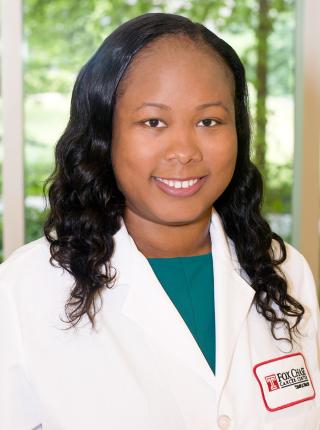The information presented in Oncology News Connection (ONC) eNewsletter is provided for physicians and other healthcare providers only and should not be shared with any current or future patients. If you are not a healthcare provider, we welcome you to sign up for Thrive eNewsletter to receive the latest information and blog highlights from Fox Chase Cancer Center.
About 1 in 8 women in the US develop invasive breast cancer in their lifetime, according to the American Cancer Society. Approximately half of all breast cancer is due to hormone receptor (HR)-positive, HER2-negative, axillary node-negative disease.

“From previous studies, we knew that women with HR-positive, HER2-negative, node-negative, early-stage breast cancer and Oncotype DX recurrence scores (RS) ≥26 benefit from chemotherapy and women with RS ≤10 have a low risk of breast cancer recurrence and do not benefit from chemotherapy.” said Kristen D. Whitaker, MD, a breast oncologist and clinical cancer geneticist at Fox Chase Cancer Center. “The recent TAILORx trial answered the question as to whether women with a mid-range RS of 11–25 benefit from chemotherapy—most do not. However, the study did show that a subset of women ≤50 years of age with a mid-range RS do benefit from chemotherapy.”
The TAILORx trial prospectively enrolled 10,273 women with HR-positive, HER2-negative, and/or axillary node-negative, early-stage breast cancer. Women with low RS (0–10) received endocrine therapy alone. Those with high RS (≥26) received endocrine therapy plus chemotherapy. Women with mid-range RS (11–25) were randomized to endocrine therapy alone, or chemoendocrine therapy.
“Chemotherapy can be avoided in roughly 70% of women with early-stage HR-positive, HER2-negative, node-negative breast cancer. This number includes many women with intermediate recurrence scores—those >50 years with RS of 11–25 and those ≤50 years with RS of 11–15,” Whitaker said. “The findings are exciting because women in this population with RS 11–25 comprise many of our patients and we now have data to better tailor their breast cancer treatments.”
It is critical to understand the subgroup analyses and how the results relate to a woman’s age, according to Whitaker. TAILORx showed definitively that women ≤50 years with an intermediate RS of 16–25 benefited from adjuvant chemotherapy. Women ≤50 years old with RS of 16–20 given chemoendocrine therapy had a 1.6% reduction in the risk of distant recurrence at 9 years vs. endocrine therapy alone. Those with RS of 21–25 had a 6.5% reduction in distant recurrence at 9 years. Women >50 years with intermediate RS did not benefit from adjuvant chemotherapy in addition to endocrine therapy.
The TAILORx results are practice-changing, and will affect the treatment of women with intermediate RS (11–25).
“Prior to this trial, we didn’t have evidence-based data on how to optimize therapy for women with an intermediate Oncotype Dx score,” Whitaker said. “These results provide the highest level of evidence, from a large, prospective trial, on how to approach treatment for women with an intermediate RS. The results will continue to be incorporated into clinical practice as providers’ awareness of the results of TAILORx increases.”
Three Things to Remember About the TAILORx Study
1. The majority of women with HR-positive, HER2-negative, node-negative, early-stage breast cancer who have mid-range RS (11–25) can be spared adjuvant chemotherapy.
2. Women >50 years old with RS ≤25 and women ≤50 years with RS of ≤15 had similar 9-year rates of invasive disease-free survival and freedom from breast cancer recurrence, regardless of whether they received endocrine therapy alone or chemoendocrine therapy.
3. The exception is that women who are ≤50 years of age, with RS 16–25, do benefit when chemotherapy is added to endocrine therapy.